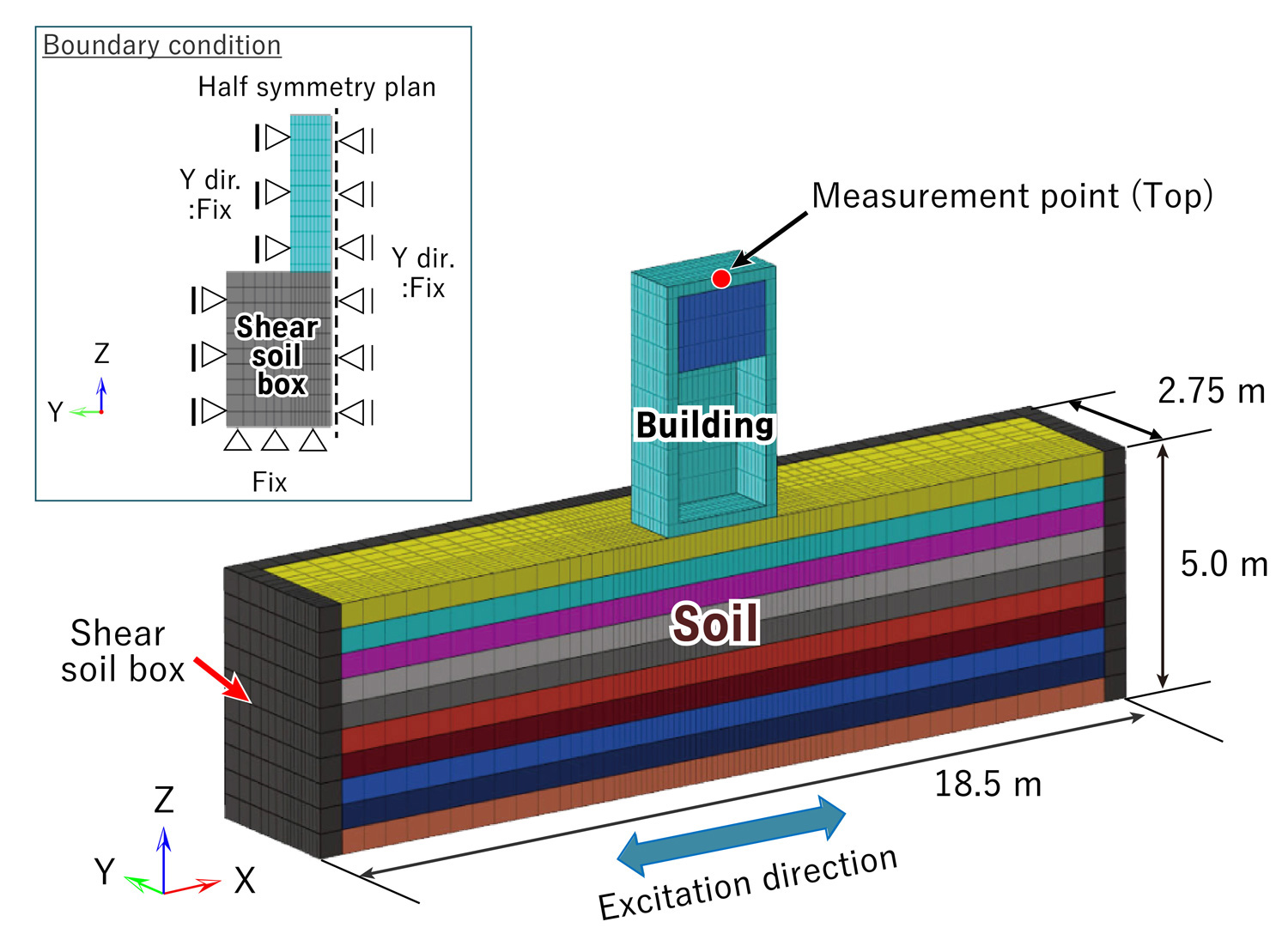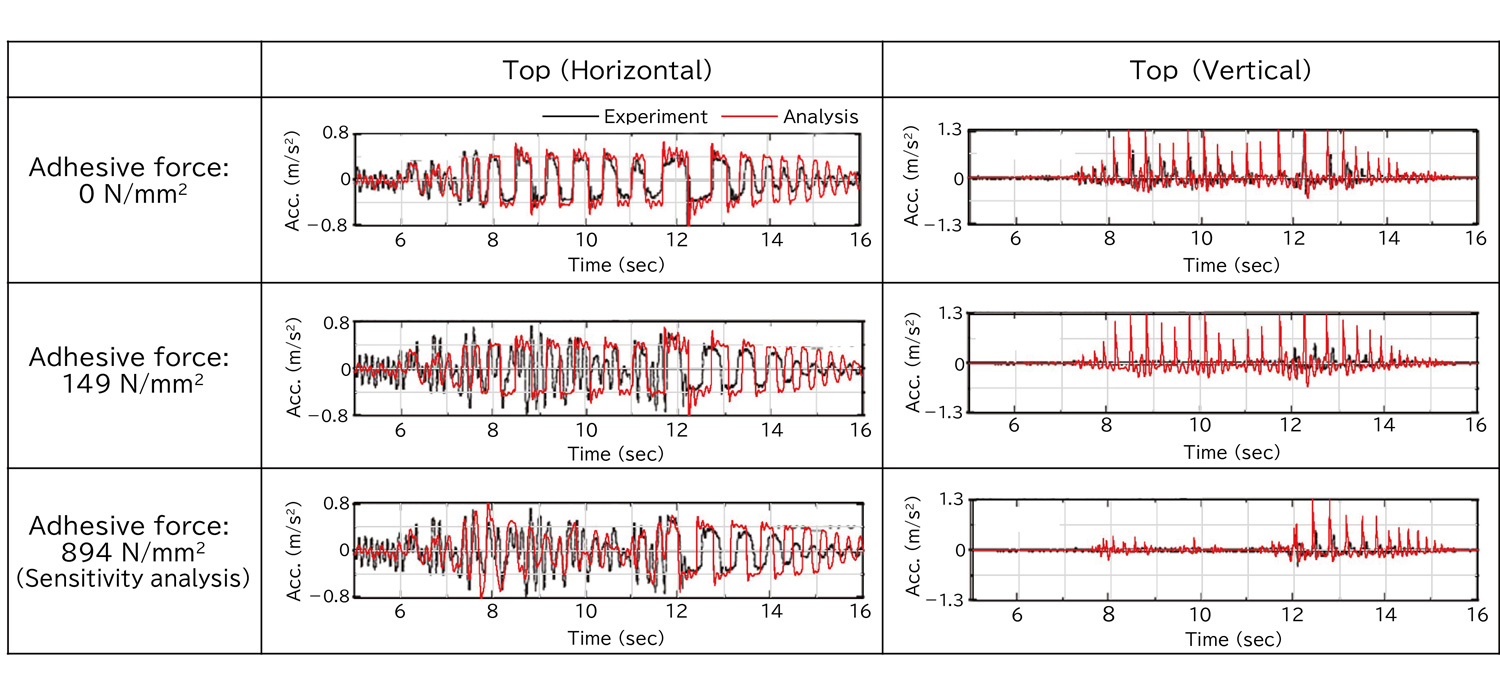Publication Date: November 18, 2025
Access counts:0
Analytical Study on Building Uplift during Strong Earthquakes
-Simulation Analysis of Experiments Related to Building Uplift-

Fig. 1 Analysis model
Table 1 Comparison of acceleration time histories

In the seismic design of nuclear facilities, verifying the analysis methods used to evaluate uplift of the building basemat during an earthquake is an important issue. The phenomenon known as the “building uplift” refers to the occurrence of large vertical accelerations (induced vertical motion) at the moment a building is lifted up, causing part of its foundation to separate from the ground and then recontact it. The forces resulting from this uplifting affects not only the structural capacity and safety of the building itself but also the response of equipment installed inside the building, making it an extremely important issue in the seismic evaluation of nuclear facilities.
The seismic mechanical behavior of a building when the contact ratio between the building basemat and the ground decreases due to uplift is not yet fully understood. In this study, a centrifuge shaking table test on clay soil conducted by Imamura et al., (2013)*, which involved adhesion between the building basemat and the ground as shown in Fig. 1 was simulated using a three-dimensional finite element analysis model to examine the validity of the analysis method. According to Table 1, the case without adhesion effect showed good agreement with the experimental results, whereas in the case with adhesion effect, the adhesion detached earlier than in the experiment, resulting in larger induced vertical motion. A sensitivity analysis showed that increasing the adhesion strength resulted in good agreement with the experimental data, although the initial soil pressure distribution at the building basemat differed from that observed in the experiment. In addition, a comparison of the initial soil pressure distributions at the building basemat revealed that the distribution patterns differed between the analysis and the experiment.
Based on the results of this study, it was demonstrated that induced vertical motion strongly depends on adhesion strength, and that attention should be paid to shape of the initial soil pressure distribution at the building basemat when evaluating the response under low contact ratio conditions. Furthermore, establishing analytical methods for evaluating uplift is expected to contribute to the advancement of future seismic design.
* Imamura, A. et al., Uplift Behaviour of Spread Foundation Structures on Sand and Clay Deposits,Journal of Structural and Construction Engineering (Transactions of AIJ), vol.78, no.692, 2013, p.1759–1768 (in Japanese).
If you have any comments or feedback about this page, please click the button to share your thoughts with us.
